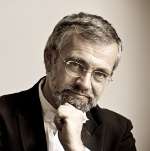As a rare coup (or fortunate programming?), the Sydney Symphony Orchestra offered the art of two world-class cellists in back-to-back concerts to its audience. Barely a week after the echoes of Daniel Müller-Schott’s concerto performances rang out, Austrian-Iranian cellist Kian Soltani stepped onto the stage of the Sydney Opera House as the soloist in Dvořák’s Cello Concerto in B minor. He is a vastly experienced young artist, particularly comfortable with this work.

After the impassioned, multi-coloured orchestral introduction, conducted by Simone Young, the soloist burst in with supreme confidence. To our era of finely doctored recordings, it can still be surprising how a single cello sound can occasionally appear overwhelmed by the voluminous forces of 60-70 orchestral musicians. Young followed every phrase of the soloist with meticulous care, keeping the orchestra playing delicately at every solo entry, and Soltani with his fine Stradivari cello excelled (after a few raspy sounds at the very beginning) at a consistently high level. The balance between solo and orchestra was refined: exactly what a great live performance offers with all its excitement and “create-it-now” atmosphere, and if that may have required some sonic adjustments from the audience, it was a minor price for the rewards of the evening.
Soltani notably observed the score’s instructions (not at all common with this particular concerto!), while forming Dvořák’s delicate lines with assured rubato. The bittersweet melodies of the slow movement were decorated with an exquisitely sensitive vibrato – a charm seldom heard since Rostropovich’s famed performances. Soltani’s control of his instrument was such that even extremely long notes, such as the introductory D introducing the movement’s cadenza, were played on one, seemingly never-ending sigh and on one bow. The finale’s virtuosic runs led to the coda’s noble poise, finishing the work on an emotional high point.
The concert began with the festive kaleidoscope of sounds which is Leoš Janáček’s Sinfonietta. This splendid work isn’t performed as often as it should be, most probably on account of the vast extra brass its score demands. A whole row of trumpets and trombones set in the choir stalls, adding to Janáček’s menacing, powerful effects with intriguing melodies and constantly changing meters.
The final item on the programme was Mussorgsky’s Pictures at an Exhibition. Ravel’s brilliant orchestration of the original piano work adds so many unusual colours, be it the brooding saxophone theme in The Old Castle, the unique tone of the tenor tuba in Bydło or the inventive use of a barrage of percussion instruments throughout our imaginary walk between the pictures.
Young’s concept of this composition was clear: she wanted a versatile range of clearly articulated and flawlessly formed orchestral vignettes. She mostly succeeded: the quality of the ensemble was excellent, the string unisons describing Samuel, the first of the two Jewish figures, powerful and the Scherzo of the Limoges marketplace brilliantly executed. What I missed was a more literal interpretation, expressing not just their musical but also human characteristics. Thus, The Ballet of the Unhatched Chicks (what a curious title!) lacked humour, Schmuÿle, the second Jew, was superb rather than whining on the trumpet solo (the composer was well-known for his antisemitic feelings) and the presentation of the witch, Baba-Yaga, while greatly performed, failed to fill me with dread.


